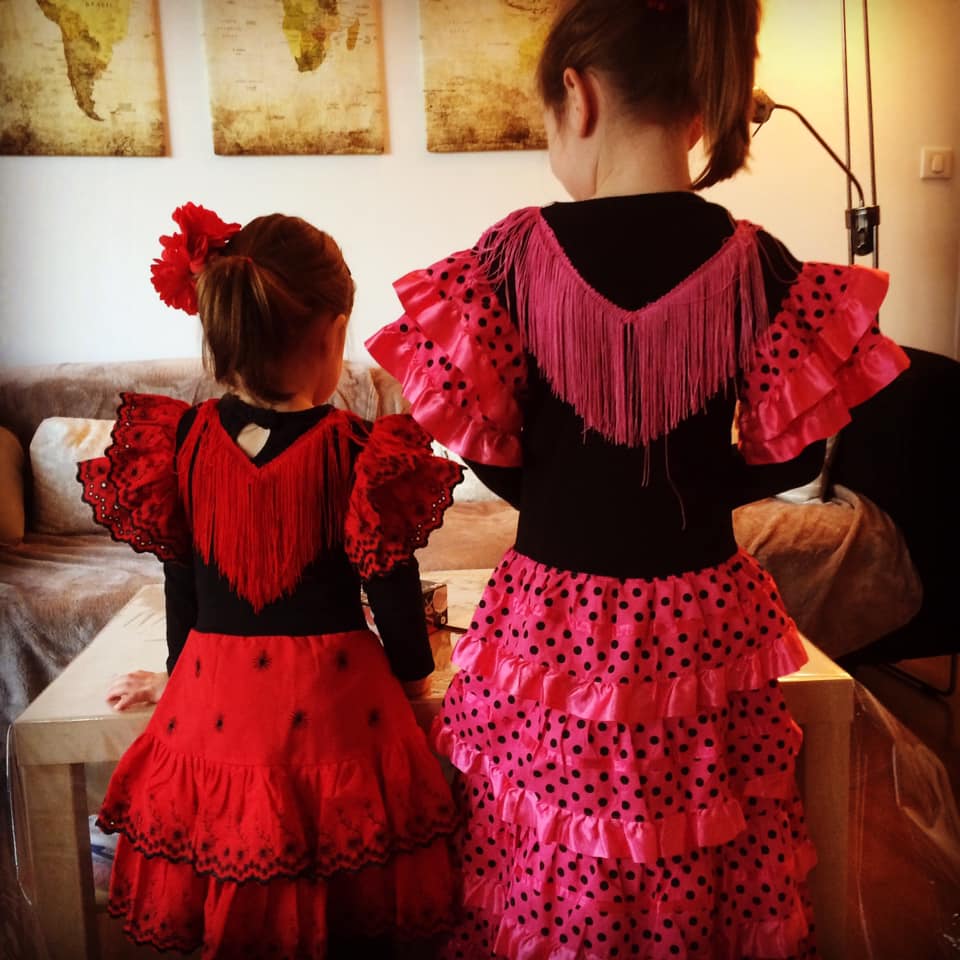The beginning
Our trilingual journey as a family began in 2012, with the arrival of our eldest daughter. We had not read anything about bilingual education, and went for the most common strategy: One Person One Language (OPOL).
My Spanish husband would speak Spanish to our baby, I would speak English to her (though I am French, I was brought up in international schools abroad and speak English at a quasi-native level), and since we live in France we would use French as the family communication language. At the time, it felt like a good choice to foster our child’s trilingual ability.
Unfortunately, by the time our eldest was 4, this proved to be a disastrous strategy. As much as she was small, our eldest had perfectly understood that since both of her parents spoke French, there was no need to bother using the other 2 languages. She was a passive trilingual. French nursery school and being surrounded by French did not help.
By then, our youngest daughter was a newborn, and we felt that if we didn’t do something, she would follow in her big sister’s passive trail, and our trilingual journey would come to an end.
Luckily, I came across the inspiring Bilingual Monkeys blog, and it’s amazing spin-off forum, The Bilingual Zoo. Reading through the blog posts and other bilingual parents’ experience were an eye-opener. I finally discovered the flow in our strategy: though we had exposed our daughter to our minority languages (1st pillar to a bilingual education), we had not created the need in her to use them (2nd pillar).
Brilliant! We now knew the why. But the next step was much harder: the how… ?

The turning point
I made a brief try without telling my husband or daughter, and spent a whole day speaking just English at home. Amazingly, by the end of the day, my eldest started to try replying in English! My husband immediately picked up on this and agreed that we had to take a major turn in our approach and go for a strict Minority Language At Home (ml@h) strategy, with a complete ban on French from our home to force our daughter to communicate in Spanish and English. In our case, this was feasible since my husband and I speak each other’s language.
We explained the change to my daughter, and gave her a “mission,” contained in a pretty golden envelope.
This envelope contained 3 flags, each representing one of our languages. We asked our daughter to stick the two minority language flags on the outside of our front door, to remind her which languages she should use when she walks into the house. On the inside of the front door, we had her post the French flag to remind her that, on the way out, she could now switch to using the majority language.
This very visual concept really helped her to understand the change occurring in our home, and acted as a reminder whenever she deliberately slipped up and we sent her to look them up.
Within 6 months, my eldest had become a completely active trilingual. Three years after this switch, my eldest’s (9 at the date of this post) Spanish and English are not perfect and can still be improved. We are still playing catch up. However, it is so much better than when she was a passive trilingual, as she can now confidently communicate in all her languages. And so far, her little sister (5) has not followed suit, and is an active trilingual.
If you are curious as to the full details of this switch, you can read about them in my Guest Post at Bilingual Monkeys: Bilingual Families and the Importance of Limiting the Influence of the Majority Language.
The benefits drawn from a strict ml@h have been huge. And as a result, we strongly believe in keeping a firm approach, and to build up on it. To continue to de-emphasise our Majority Language (ML), French, and to emphasise our 2 minority languages (ml), Spanish and English, so they may bloom.

Why this blog?
This experience has been very rich and enlightening. The bilingual journey is often a very lonely one, so I would like to share with other bilingual parents all those little things learnt along the way, in the hope that it might make your journey feel a little less lonely.
This blog aims at being a sort of “toolbox” where bilingual parents can find practical tips and ideas to pick and choose from, to raise their children bilingual. My posts are inspired from my own experience or that of other bilingual parents I know or have read about. To make this “toolbox” as complete as possible, please share your own tips and ideas in the comment sections of my posts, so as to help other bilingual parents on their journey. Together, we will feel stronger and less isolated in front of the bilingual education giant. 😉
Follow this blog on social media:
- Instagram: amy_ourmlhome
- Twitter:@Ourmlhome1
- Facebook: www.facebook.com/ourmlhome
